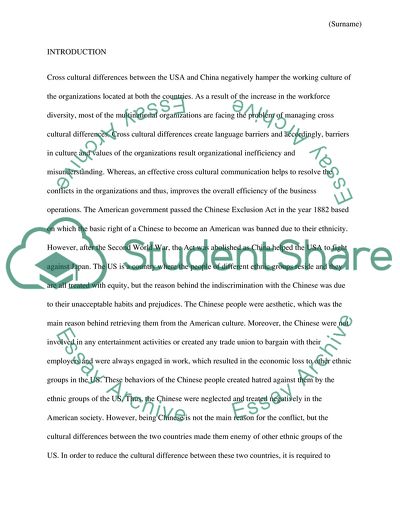Cite this document
(Cross-Cultural Differences between the USA and China Coursework Example | Topics and Well Written Essays - 3750 words, n.d.)
Cross-Cultural Differences between the USA and China Coursework Example | Topics and Well Written Essays - 3750 words. https://studentshare.org/culture/1852738-cross-culture-management
Cross-Cultural Differences between the USA and China Coursework Example | Topics and Well Written Essays - 3750 words. https://studentshare.org/culture/1852738-cross-culture-management
(Cross-Cultural Differences Between the USA and China Coursework Example | Topics and Well Written Essays - 3750 Words)
Cross-Cultural Differences Between the USA and China Coursework Example | Topics and Well Written Essays - 3750 Words. https://studentshare.org/culture/1852738-cross-culture-management.
Cross-Cultural Differences Between the USA and China Coursework Example | Topics and Well Written Essays - 3750 Words. https://studentshare.org/culture/1852738-cross-culture-management.
“Cross-Cultural Differences Between the USA and China Coursework Example | Topics and Well Written Essays - 3750 Words”. https://studentshare.org/culture/1852738-cross-culture-management.


